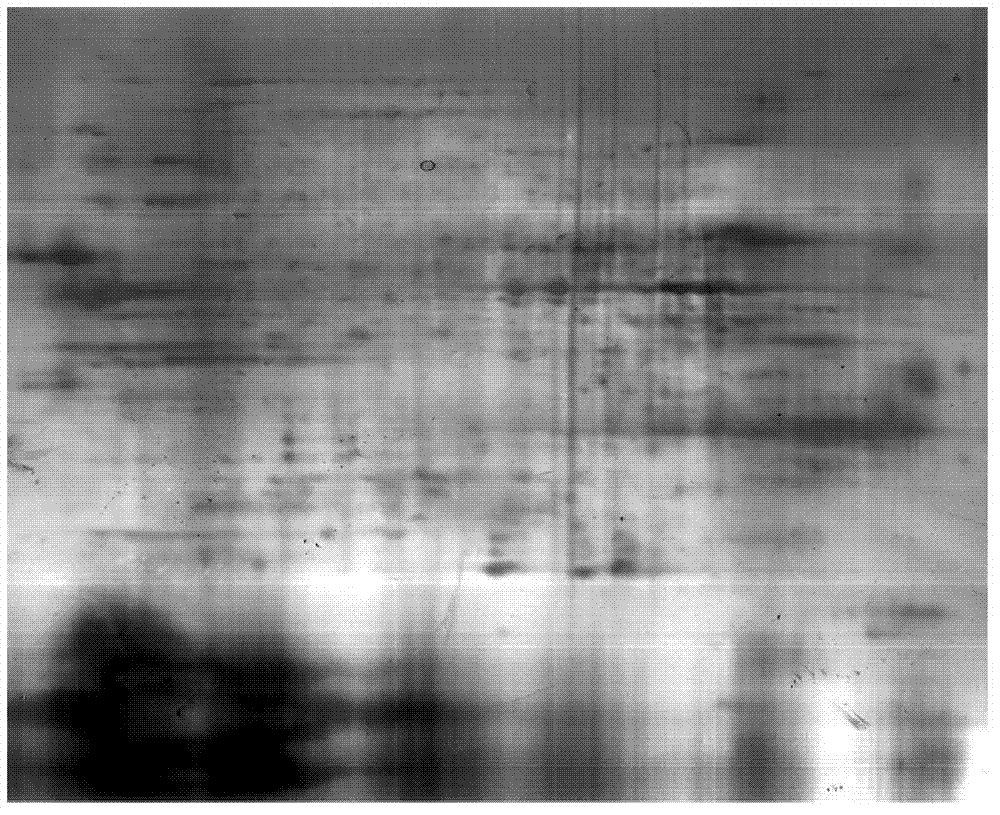Enrichment method of low abundance protein in bee venom
A protein, low abundance technology, applied in the field of protein processing, can solve the problems of protein loss, poor method reproducibility, cumbersome separation process, etc., and achieve high specificity, simple operation, and good repeatability.
- Summary
- Abstract
- Description
- Claims
- Application Information
AI Technical Summary
Problems solved by technology
Method used
Image
Examples
Embodiment 1
[0032] Example 1 Enrichment of low-abundance proteins in the venom of Apis mellifera
[0033] 1. Soak 500 mg of hexapeptide ligand microbeads bonded to porous polyhydroxymethacrylate particles and 2.0 mL of pure water in a syringe for 5 min, then mix on a shaker for 1 min, centrifuge for 2 min, discard the effluent, and repeat the above Operate 1 time.
[0034] 2. Add 2.0mL PBS buffer solution and place it in the above syringe, shake for 1 min, centrifuge for 2 min, discard the effluent, and repeat the above operation once.
[0035] 3. Accurately weigh 1.0g of the bee venom sample of Apis mellifera and place it in a 2.5mL centrifuge tube, add 1.0mL of pure water, vortex to dissolve it completely, then centrifuge at 4°C and 10000rpm for 5min at high speed, and take the supernatant .
[0036]4. Soak the sample supernatant in the above-mentioned syringe containing the hexapeptide ligand microbeads and mix for 30 minutes, mix in the shaker for 1 minute every 5 minutes, make the ...
Embodiment 2
[0046] 1. Soak 300 mg of hexapeptide ligand microbeads bonded to porous polyhydroxymethacrylate particles and 1.0 mL of pure water in a syringe for 5 minutes, then mix on a shaker for 1 minute, centrifuge for 2 minutes, discard the effluent, and repeat the above Operate 1 time.
[0047] 2. Add 1.0mL PBS buffer solution and place it in the above syringe, shake for 1 min, centrifuge for 2 min, discard the effluent, and repeat the above operation once.
[0048] 3. Accurately weigh 1.0g of the bee venom sample of Apis mellifera and place it in a 2.5mL centrifuge tube, add 1.0mL of pure water, vortex to dissolve it completely, then centrifuge at 4°C and 10,000rpm for 5min at high speed, and take the supernatant .
[0049] 4. Soak the sample supernatant in the above-mentioned syringe containing the hexapeptide ligand microbeads and mix for 25 minutes, mix in the shaker for 1 minute every 5 minutes, make the sample supernatant fully contact with the microbeads, centrifuge for 2 minu...
Embodiment 3
[0055] 1. Soak 500 mg of hexapeptide ligand microbeads bonded to porous polyhydroxymethacrylate particles and 2.5 mL of pure water in a syringe for 5 minutes, then mix on a shaker for 3 minutes, centrifuge for 5 minutes, discard the effluent, and repeat the above Operate 1 time.
[0056] 2. Add 2.0mL PBS buffer solution and place it in the above syringe, shake for 3 minutes, centrifuge for 5 minutes, discard the effluent, and repeat the above operation once.
[0057] 3. Accurately weigh 1.0g of the bee venom sample of Apis mellifera and place it in a 2.5mL centrifuge tube, add 2.0mL of pure water, vortex to dissolve it completely, then centrifuge at 4°C and 10000rpm for 5min at high speed, and take the supernatant .
[0058] 4. Soak the sample supernatant in the above-mentioned syringe containing the hexapeptide ligand microbeads and mix for 40 minutes, mix in the shaker for 1 minute every 5 minutes, make the sample supernatant fully contact with the microbeads, centrifuge fo...
PUM
 Login to View More
Login to View More Abstract
Description
Claims
Application Information
 Login to View More
Login to View More - R&D
- Intellectual Property
- Life Sciences
- Materials
- Tech Scout
- Unparalleled Data Quality
- Higher Quality Content
- 60% Fewer Hallucinations
Browse by: Latest US Patents, China's latest patents, Technical Efficacy Thesaurus, Application Domain, Technology Topic, Popular Technical Reports.
© 2025 PatSnap. All rights reserved.Legal|Privacy policy|Modern Slavery Act Transparency Statement|Sitemap|About US| Contact US: help@patsnap.com


